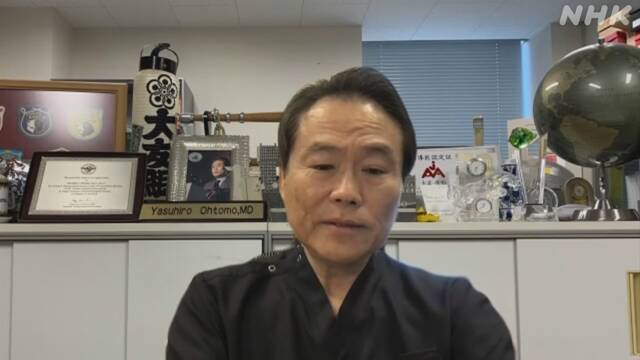Due to the medical strain caused by the spread of the new coronavirus, it is becoming difficult for hospitals that provide emergency response in Tokyo to accept not only the new corona but also highly urgent emergency patients other than the corona.
In some cases, patients have to be treated in an ambulance parked in the parking lot of a hospital, and doctors at the site say that "the response has exceeded the limit."
Tokyo Medical and Dental University Hospital in Bunkyo Ward, Tokyo, responds to the sixth wave of infection by securing 61 beds in total for patients with moderate or severe illness of the new corona, and responding to corona in Tokyo. Has played a central role in.
At this hospital, patients other than Corona have been assigned the role of seeing them at other hospitals after temporary treatment, but from the beginning of this month, emergency beds are becoming tight at nearby hospitals as well. As we are no longer able to accept, we are increasingly dealing with patients other than corona.
However, due to the lack of beds and medical staff for hospitalization, there were cases where patients were detained at the place where initial emergency medical care was performed, and from around the middle of this month, there were also places where patients were examined in the hospital. In some cases, there was a shortage of medical treatment in the ambulance parked in the hospital parking lot.
In Tokyo, it is becoming difficult to respond to patient acceptance requests even at designated tertiary emergency hospitals that handle patients with high urgency, such as this hospital, so hospitals have to provide medical care in the parking lot. We expect that the number of cases that cannot be obtained will continue to increase.
Yasuhiro Otomo, director of the critical care center at Tokyo Medical and Dental University Hospital, said, "It is difficult to decide where to accept fractured patients and elderly corona patients. It's a painstaking measure to avoid unfortunate consequences from getting worse while waiting. The emergency care system is already over the limit, but I want to do my best. "
Unacceptable at about 20 hospitals and transported in an ambulance
At Tokyo Medical and Dental University Hospital, it is not possible to see patients who have been transported by emergency in the hospital, and there are a number of cases where treatment is performed in an ambulance parked in a parking lot.
On the 23rd, around 8 am, three staff members, including a doctor, boarded an ambulance with the patient in the parking lot of the hospital and performed treatments such as intravenous drip.
At this time, a patient in his 50s was transported, feeling suffocated on the morning of the 23rd, and was transported by ambulance, but it was not accepted at about 20 hospitals, and it took more than an hour to come to this hospital. It means that it was standing.
The patient was positive when the doctors tested the new corona after the initial treatment, and he was then taken to another hospital.
The doctor who responded said, "Since this month, I have been dealing with medical treatment in the parking lot 5 or 6 times even on the day I was on duty, and I managed to rescue the suddenly changed patient in the ambulance. In some cases, it is necessary to reduce the number of patients at risk of life in situations where hospitalization is difficult, and I would like you to understand. "
Cases where emergency transportation in Tokyo is difficult
The number of cases in Tokyo where it is difficult to carry out emergency transportation, which has increased rapidly in the 6th wave, remains at a high level.
If it becomes difficult for the Tokyo Metropolitan Government to find a place to accept emergency patients because the ambulance crew is refused by five or more hospitals or it is not decided even after 20 minutes or more, the regional core hospital etc. will be the destination. We operate a system called "Tokyo Rule" to search for.
The number of applications of this system increased sharply in the 6th wave, and the 7-day average, which was 60.3 on January 1, tripled to 180 in half a month.
And as of the 18th of this month, it was a record high of 264.1 cases.
Even as of the 21st, which is the latest figure, the high level of 245.6 cases continues.

